
When people decide to live abroad for a year (or longer), many of them are hoping to broaden their perspectives, change their lives, and find something new: about the world, about themselves. I can’t say I was any different when I decided to teach abroad. I love Seattle and I am incredibly excited to return home in July, but I felt restless and I craved both the challenges and the new experiences a year abroad would bring me. Of course, we cannot predict how such experiences will change and shape us, or our priorities.
One of the most unexpected effects this year in Hungary has had on me has been the reigniting of my interest in and passion for American politics (specifically for U.S. health care reform, but more on that in a little bit). I find myself invested in politics in a way I haven’t felt since I was a fourteen-year-old high school freshman in Honors ELPSA (that’s “Economic, Legal, and Political Systems in Action”). The next year of school I took AP Government, which turned out to be a bunch of busywork that didn’t make me feel passionate about much of anything, and I sort of fell off the boat, so to speak (I also dropped out of high school that year for a couple of months, to give you some context). I think I’ve finally found my way back on the boat, though.
Thinking about it within the frame of the bigger picture, I shouldn’t be too terribly surprised by this change in me. I learned when I studied in France that nothing makes me as patriotic as living abroad. And we’ve entered a presidential election year, which always brings politics a little bit closer to the front of Americans’ brains, which is a factor. But the biggest factor of all has to do with the fact that I’ve been teaching at a medical university and in the fall I was assigned to teach a course on the health care systems of English-speaking countries (as if being a native English speaker from an English-speaking country was sufficient to qualify me to teach such a course). Needless to say, I learned an immense amount about health care in a very short amount of time.
When it came to American health care, I was baffled.
Now, I may have fallen of the politico boat as a teenager, but I wasn’t completely ignorant of politics in the past few years. I even took the time to volunteer for the Obama campaign in 2008, back when I was living in North Carolina (I was immensely proud when my home state of NC, which typically goes red in presidential races, was called for Obama). I was aware that health care was a big issue in the 2008 election, too. But to be perfectly honest, I didn’t really have any idea why. I had health insurance and I knew we paid a $15 co-pay when we went to the doctor, but that’s about it. I didn’t realize almost 50 million Americans didn’t have health insurance. I didn’t realize the power and sway of American health insurance and pharmaceutical companies. I didn’t realize they were for-profit. I didn’t realize a lot of things. I think the same can be said for most Americans – especially young Americans, whose votes can pack a punch if they actually know what to vote for.
But then I had to teach a course on all this stuff, and so I learned all about it. And I also learned about the health care systems of the UK, Australia, and Canada. And no system is perfect, but they all seemed to have things figured out a lot better than the United States. To be the only western, developed nation without universal coverage is an oversight of the highest magnitude. We earned our position as #37 on the World Health Organization’s ranking of health care systems by quality and fairness (published in 2000).
In the modern political climate of the United States, it’s really easy to feel depressed once you start paying attention. But I’ve been fortunate to talk health care and politics with my students here in Hungary over the course of the year, with students preparing to enter the Hungarian health care system and students already working in it. Among those already working in it (and even among some of those just preparing), a sense of hopelessness and helplessness seems to pervade. Given Hungary’s history and cultural leanings, I am tempted to attribute it to collective learned helplessness. Everyone insists that things should change, but no one knows how or what to do about it. Politicians don’t care, and they’re the ones making decisions. Hungary and the United States start to look a lot more similar. Interestingly, the feelings of helplessness I witness in a system outside my own only serve to strengthen my own resolve to try and change things back home (perhaps the American attitude that you can accomplish anything you set your mind to plays a role in this). I can only hope to inspire some of the same resolve in my students – it is only from within the system itself that change can come. Hungary’s health care battle is its own to fight, and they have many problems to deal with. But so does the United States, and it is toward home I turn my eyes now.
I thought I’d share with you some of the books I’ve been reading this year, because I can’t recommend them enough.
For those who want a crash course in what the health care systems of other rich capitalist economies look like:
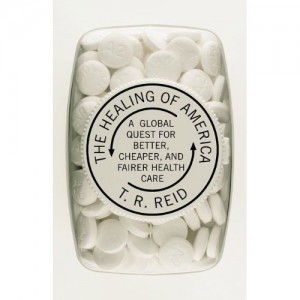
The Healing of America by T.R. Reid
Blurb: “How is it that all other industrialized democracies provide health care for their citizens as a reasonable cost-something the United States has never managed to do? In The Healing of America, New York Times bestselling author T.S. Reid shows how they do it, bringing to bear his talent for explaining complex issues in a clear, engaging way. In his global quest to find a prescription for American health care, Reid finds that it’s not all “socialized medicine” out there. Instead, many industrialized democracies rely on free-market models the U.S. could use to cure a health system that has failed us.”
For those familiar with different health care system models who want an overview of major health care reform efforts in the United States:

Remedy and Reaction: The Peculiar American Struggle over Health Care Reform by Paul Starr
Blurb: “In no other country has health care served as such a volatile flashpoint of ideological conflict. America has endured a century of rancorous debate on health insurance, and despite the passage of legislation in 2010, the battle is not yet over. This book is a history of how and why the United States became so stubbornly different in health care, presented by an expert with unsurpassed knowledge of the issues.
Tracing health-care reform from its beginnings to its current uncertain prospects, Paul Starr argues that the United States ensnared itself in a trap through policies that satisfied enough of the public and so enriched the health-care industry as to make the system difficult to change.”
For those well-versed in health care systems and American health care, a thorough explanation of 2010’s Affordable Care Act:

Health Care Reform and American Politics: What Everyone Needs to Know by Lawrence R. Jacobs and Theda Skocpol
Blurb: “The Patient Protection and Affordable Care Act signed by President Obama in March 2010 is a landmark in U.S. social legislation. The new law extends health insurance to nearly all Americans, fulfilling a century-long quest and bringing the United States to parity with other industrial nations. Affordable Care aims to control rapidly rising health care costs and promises to make the United States more equal, reversing four decades of rising disparities between the very rich and everyone else. Millions of people of modest means will gain new benefits and protections from insurance company abuses – and the tab will be paid by privileged corporations and the very rich.
How did such a bold reform effort pass in a polity wracked by partisan divisions and intense lobbying by special interests? What does Affordable Care mean – and what comes next? In Health Care Reform and American Politics: What Everyone Needs to Know, Lawrence R. Jacobs and Theda Skocpol–two of the nation’s leading experts on politics and health care policy–provide a concise and accessible overview.”
With the possibility that the U.S. Supreme Court could turn over the Affordable Care Act, and in a presidential election year, to boot, it’s more important than ever for people to understand the issues that they’re voting for or against when they vote for a candidate. I can’t urge you enough to read one or more of these books, and to share them with the people you know.








 Gullfoss, a massive waterfall. You can see a path and overlook on the left side of the photo, with tiny people!
Gullfoss, a massive waterfall. You can see a path and overlook on the left side of the photo, with tiny people!
 Strokkur, a fountain geyser with frequent eruptions. Iceland has a lot of geothermal activity (energy which they’ve learned to harvest to heat their homes and greenhouses)
Strokkur, a fountain geyser with frequent eruptions. Iceland has a lot of geothermal activity (energy which they’ve learned to harvest to heat their homes and greenhouses)

 The continental rift valley of Thingvellir National Park, which straddles the divide between the North American and Eurasian tectonic plates.
The continental rift valley of Thingvellir National Park, which straddles the divide between the North American and Eurasian tectonic plates. Sighişoara
Sighişoara













 the last house on the right (the yellow one) was the birthplace of Vlad the Impaler
the last house on the right (the yellow one) was the birthplace of Vlad the Impaler








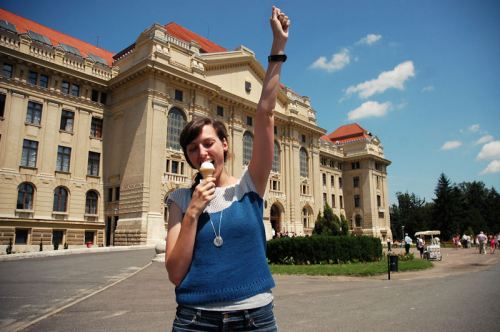

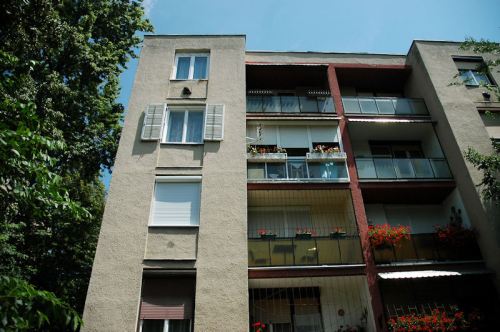
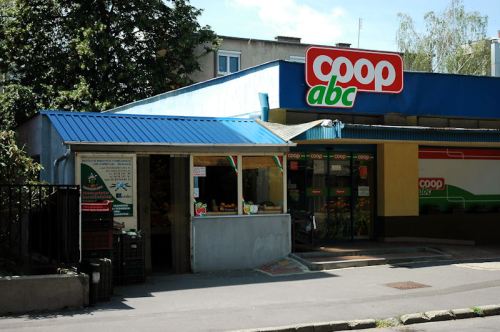
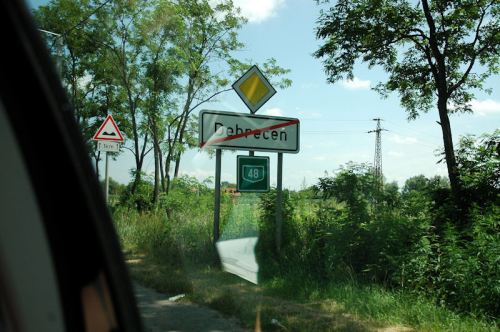



























 Ferihegy in Budapest – saying farewell to sunny Hungary
Ferihegy in Budapest – saying farewell to sunny Hungary Arthur’s seat
Arthur’s seat
 tea and cake at Tea at 94
tea and cake at Tea at 94 the National Museum
the National Museum
 The Elephant House – a cafe famous to Harry Potter fans as one of the cafes where Rowling worked on the books
The Elephant House – a cafe famous to Harry Potter fans as one of the cafes where Rowling worked on the books Laura!
Laura!







 The Olympic Torch had passed through town just a week or two before I was there (and that horrid London 2012 logo was everywhere, too)
The Olympic Torch had passed through town just a week or two before I was there (and that horrid London 2012 logo was everywhere, too)











 “smoking and open flames prohibited” (all of the stairs are wooden)
“smoking and open flames prohibited” (all of the stairs are wooden) I believe this is the Rákóczi bell, largest bell belonging to a Hungarian Protestant church
I believe this is the Rákóczi bell, largest bell belonging to a Hungarian Protestant church Just a few more (very) steep stairs to the top…
Just a few more (very) steep stairs to the top…






